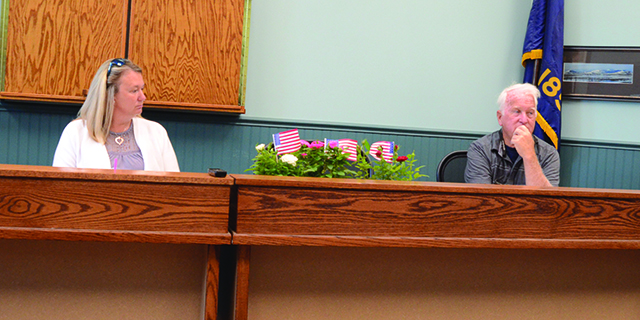Opinion McColgan
Published 6:00 am Wednesday, August 28, 2019
During President Obama’s two terms in office, I wrote a column every couple of years to remind readers of the economic progress our nation was making as we worked our way out of the deepest recession since the Great Depression. Using four economic barometers — the stock market, the jobs picture, growth, and the federal budget deficit – I will try to make a similar assessment of Trump’s first two and a half years in office.
The boom in the stock market was one of Obama’s best claims to economic prosperity. During his eight years, stock market averages tripled in value. To keep the numbers simple, if you take a 200% increase and average that over eight years, Obama could lay claim to about a 25% annual increase in stock values.
Trending
Trump’s first year in office saw a slight uptick in that rate, with a stock market increase of almost 30% in 2017. But since that time, the market has leveled out significantly, with growth of only about 2% in the last year and a half. So Trump’s annual increase averaged over two and a half years is only about 12% in stock market value.
President Obama’s jobs numbers began bleakly, with unemployment at 10.2% in October of 2009 during the worst month of the Great Recession. But by January of 2017, he handed over an unemployment rate of 4.8% to his successor. A reduction of 5.4% in unemployment over 7 1/4 years meant an annual decrease of about ¾ of a point during the Obama economic recovery.
Under President Trump, unemployment has continued to decline, reaching the lowest rate in about fifty years, and now holding steady at about 3.7%. That is good news for job-seekers, but a decrease of 1.1% in 2 1/2 years averages out at an annual drop of less than half a point. So Trump’s improvements have leveled off compared with Obama’s, even though Trump’s unemployment rate is better. And overall job creation under Trump is on a par with Obama’s final six years in office, clicking along at about 200,000 new jobs created each month.
Obama’s Real Gross Domestic Product grew at about 1.9% annually over eight years, with his average growth being higher, at about 2.4% annually, during his final four year term. So far Trump’s growth rate is slightly higher at about 2.6% during his first two and a half years, but 2019 appears to have slowed from the quicker pace of 2017 and 2018. That slowing in the growth of GDP also matches the leveling of the unemployment rate over the past nine months, perhaps indicating that a mild recession might be on our national horizon.
President Obama inherited a dismal 2009 federal budget deficit of 1.4 trillion from George W. Bush, and over six years, he was able to whittle away at it to get it under 500 billion before it began to climb again to 585 billion in his final year in office. Unfortunately, President Trump’s tax cuts, enacted in January of 2018, have steered the federal budget deficit further in the wrong direction. His 2018 deficit climbed to 779 billion, and 2019 is projected to exceed one trillion again – all in the midst of the lowest unemployment in half a century!
While the overall economic picture remains strong, the slowing of the stock market and the growth of the federal deficit ought to be viewed as warning signs. These are leading economic indicators, whereas employment is a lagging indicator. If investors become more nervous and deficits mount, look for employers to begin hiring fewer workers and and preparing for harder times ahead.
Trending
Meanwhile, President Trump’s erratic personal behavior on the economic front does little to bolster confidence. He changes his mind and his policies almost daily when it comes to tariffs or tax cuts. He rails at the Federal Reserve Board for raising interest rates even slightly, even though there is no better time to raise rates than during periods of prosperity. His wild mood swings and tendency to blame others should be a sober indicator of how he would govern if things really got tough for the country again.
John McColgan writes from his home in Joseph.









